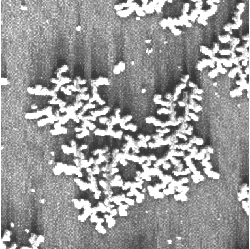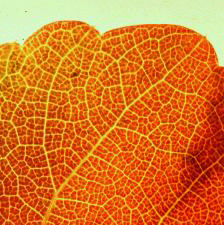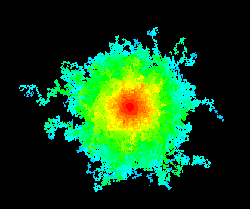Sharon Stidfole-Sorlie,
PhD
Social Studies DepartmentHead
Reading, Language Arts, Social Studies
Antioch Upper
Grade School
Link 1
| Chaos Theory:The Unity and Interdependence of nature |
|
Fractals: A Universal Design
|
|
Fractals in nature and applications
Fractals are not just complex shapes and pretty pictures
generated by computers. Anything that appears random and irregular
can be a fractal. Fractals permeate our lives, appearing in places
as tiny as the membrane of a cell and as majestic as the solar system.
Fractals are the unique, irregular patterns left behind by the unpredictable
movements of the chaotic world at work. In theory, one can argue that everything existent
on this world is a fractal: Fractals have always been associated with the term
chaos. One author elegantly describes fractals as "the patterns
of chaos." Fractals depict chaotic behaviour, yet if one looks
closely enough, it is always possible to spot glimpses of self-similarity
within a fractal. To many chaologists, the study of chaos and fractals
is more than just a new field in science that unifies mathematics,
theoretical physics, art, and computer science - it is a revolution.
It is the discovery of a new geometry, one that describes the boundless
universe we live in; one that is in constant motion, not as static
images in textbooks.
Weather is a favorite example for many people. Forecasts are never totally accurate, and long-term forecasts, even for one week, can be totally wrong. This is due to minor disturbances in airflow, solar heating. Each disturbance may be minor, but the change it create will increase geometrically with time. Soon, the weather will be far different than what was expected. With fractal geometry we can visually model much of
what we witness in nature, the most recognized being coastlines
and mountains. Fractals are used to model soil erosion and to analyze
seismic patterns as well. Seeing that so many facets of mother nature
exhibit fractal properties, maybe the whole world around us is a
fractal after all!
|




 |

This site was created by Sharon Stidfole-Sorlie at the NEH Summer Institute "Cultures and Religions of the Himalayan Region," held at the College of the Holy Cross, Summer 2004